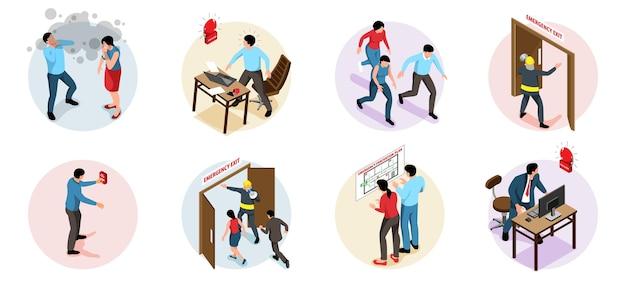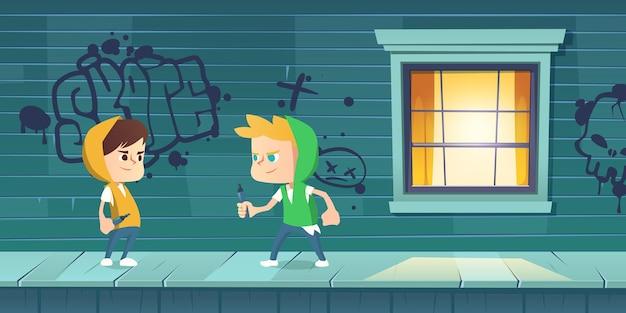In the age of digital art, the lines between inspiration, imitation, and infringement can become blurred. Aspiring artists often find themselves grappling with questions like “Is it OK to copy someone’s art?” or “Is tracing cheating in digital art?” These queries, along with concerns about stealing, legality, and artistic integrity, have fueled a heated debate within the creative community.
In this blog post, we will delve into the complex realm of tracing art, exploring its implications, controversies, and legalities. While some argue that tracing can be a valuable learning tool, others view it as a form of cheating or even stealing. We’ll examine whether tracing is considered cheating, the consequences it may entail, the difference between tracing and copying, and the ethical dimensions surrounding this practice.
Join us as we unravel the intricacies surrounding tracing art in the modern era. Whether you’re an aspiring artist seeking guidance, a fan of the arts with a curious mind, or simply interested in the interplay between creativity and legality, this blog post aims to provide you with a comprehensive understanding of the subject.
Is Tracing Art Illegal
Artists and enthusiasts alike often find themselves pondering the question: “Is tracing art illegal?” Well, grab your pencils and let’s dive into this intriguing topic!
The Grey Area of Tracing
Tracing, in its simplest form, involves reproducing an existing image by outlining it onto a new canvas or paper. While the act itself may not be illegal, the real issue lies in the intention and context surrounding it.
Copyright Conundrum
When it comes to tracing art, copyright law is the key player. Works of art, whether they are paintings, illustrations, or sculptures, are protected by copyright the moment they are created. This means that reproducing someone else’s artwork without permission can potentially infringe on their copyright rights.
Transformative Tracing
However, there is a notion known as “transformative use” that can come into play. Transformative use occurs when someone takes an existing work and creates something new and original out of it. In the case of tracing, if the traced artwork is significantly modified or altered, it can potentially be considered a new and separate creation that falls under fair use.
Fair Use Defense
In the United States, fair use allows limited use of copyrighted material without permission from the original creator. This defense is typically employed when the new creation serves a different purpose or conveys a different message than the original work. However, determining what constitutes fair use is subjective and can vary on a case-by-case basis.
Ethical Considerations
While tracing art might not always be illegal, it’s essential to consider the ethical implications. Copying someone else’s artwork without proper acknowledgment or credit can be seen as plagiarism and disrespectful to the original artist’s creativity and hard work. It’s always best to seek permission from the artist or create your own original pieces to express your artistic vision.
In the hazy territories of tracing art, legality intertwines with morality. While tracing artwork for personal practice or as a learning tool may not land you in legal trouble, using traced art for commercial purposes or without proper attribution can cross the line. Ultimately, it’s crucial to respect copyright laws, exercise ethical judgment, and remember that true artistry lies in the pursuit of creating something entirely unique. So, pick up that pencil and let your imagination lead the way!
FAQ: Is Tracing Art Illegal
Welcome to our comprehensive FAQ guide on the topic of tracing art. In this subsection, we’ll address common questions and concerns surrounding the legality and ethics of tracing in the art world. So, grab your sketchbook and let’s delve into the world of artistic inspiration and creativity!
Is it OK to Copy Someone’s Art
As an aspiring artist, it’s completely normal to find inspiration in the works of others. However, it’s important to respect artists’ originality and individuality by avoiding direct copying or plagiarism. Instead, focus on interpreting their style, incorporating their techniques, or using their work as a reference to develop your unique artistic voice.
Is Tracing Cheating in Digital Art
While tracing in digital art can be a controversial topic, it’s essential to consider the purpose and context. Tracing can be a valuable tool for learning and understanding shapes, proportions, and forms. It’s perfectly acceptable to trace as a part of the learning process, but it becomes problematic when used without giving proper credit or presenting traced work as entirely original.
Can I Trace a Picture in Procreate
Absolutely! Procreate, with its versatility and user-friendly interface, is an excellent platform for tracing. Whether you’re a beginner or a professional artist, tracing images in Procreate can help you learn about composition, lighting, and texture. Just remember to acknowledge the original source if you decide to share or publish your traced artwork.
Is Drawing Using a Grid Cheating
Not at all! Drawing with a grid, known as the grid method, has been used by many artists throughout history. It’s an effective technique for achieving accuracy in proportions and perspective. The grid acts as a guide and helps artists break down complex subjects into manageable sections. Drawing with a grid is a legitimate approach that enhances your skills rather than cheats them.
Do Artists Copy Each Other
Artists have been influenced by and borrowed ideas from their peers for centuries. This process of artistic evolution is essential for growth and innovation. However, it’s crucial to strike a balance between drawing inspiration from others and creating original work that reflects your unique perspective and style. So, borrow techniques and ideas, but always strive to put your own spin on them.
Can You Learn Drawing by Yourself
Absolutely! With determination, practice, and a wealth of online resources, it’s entirely possible to teach yourself drawing. Many successful artists have honed their skills through self-study. Embrace the joy of experimentation, learn from tutorials, books, and practice consistently. Remember, the path of self-learning can be rewarding, but seeking guidance from instructors or joining art communities can also be beneficial.
Is Tracing Considered Cheating
Tracing itself is not considered cheating. It’s a technique that can be used as a learning tool, helping you understand the structure and details of a subject. However, it becomes unethical when you present traced work as original or fail to credit the original source. Ultimately, it’s essential to use tracing as a means of growth and inspiration rather than a shortcut to success.
Can You Go to Jail for Tracing Art
No, tracing art does not typically lead to legal consequences or imprisonment. However, if you trace someone’s copyrighted work and use it for commercial purposes without permission, you may find yourself facing legal issues. To avoid such problems, always seek proper authorization or create your original artworks.
What Is Considered Stealing Art
Stealing art involves claiming someone else’s work as your own without their permission or without providing proper attribution. This includes directly copying or tracing artwork, plagiarizing someone’s style, or using their concepts without credit. Respect for fellow artists’ intellectual property rights is vital for fostering a healthy and ethical artistic community.
Is It OK to Draw from Photos
Absolutely! Drawing from photos is a valuable exercise for developing observational skills and capturing realistic details. It allows you to work at your own pace and explore various subjects without the limitations of time or movement. However, ensure that you are using royalty-free or properly licensed photos and always give credit to the original photographer when sharing or showcasing your work.
Can I Copy a Painting and Sell It
Copying a painting and selling it without permission from the original artist or their estate is a violation of intellectual property rights. It is considered both unethical and illegal. If you admire a certain painting, consider creating your original work inspired by its style or elements instead. Respect for artistic integrity strengthens the community and ensures a fair and supportive environment.
How Many Hours a Day Should I Practice Drawing
There are no strict rules regarding the number of hours you should practice drawing each day. However, regular practice is key for skill development. Aim for consistency rather than focusing solely on the quantity of hours. It’s better to practice for shorter periods every day than to cram in a few hours irregularly. Remember, progress takes time, so enjoy the journey and be patient with yourself.
Is It Bad to Trace Poses
Tracing poses can be a helpful exercise for understanding human anatomy and capturing gestures accurately. However, it’s crucial not to solely rely on tracing. Incorporate observational drawing, life drawing sessions, or sketching from references alongside tracing to develop a deeper understanding. Combine various techniques to strengthen your artistic abilities and expand your creative range.
Do Hyper-realistic Artists Trace
Hyper-realistic artists employ a variety of techniques to achieve their stunning results. While some may use tracing as a foundation for specific details, many prefer to work primarily from references and rely on their meticulous observational skills. The goal of hyper-realistic art is to create lifelike renditions that showcase the artist’s patience, talent, and attention to detail.
Should I Learn to Draw
Absolutely! Learning to draw is a wonderful journey of self-expression and creativity. Whether you aspire to be a professional artist or simply seek a fulfilling hobby, the benefits of learning to draw go beyond artistic skill development. It enhances problem-solving abilities, boosts mindfulness, and enables you to communicate visually in a unique and powerful way. So, grab that pen and let your imagination run wild!
What Famous Artists Use the Grid Method
The grid method has been employed by accomplished artists throughout history. Some famous artists known to have utilized this technique include Leonardo da Vinci, Johannes Vermeer, and Chuck Close. By breaking down complex compositions into manageable sections, these artists were able to achieve remarkable precision and accuracy in their works.
Does Tracing Improve Drawing
Tracing can be a valuable exercise for beginners as it helps to comprehend the basic shapes and structures of a subject. It allows you to understand the relationship between various elements and develop hand-eye coordination. However, to improve your drawing skills in the long run, it’s important to gradually reduce reliance on tracing and focus on studying and interpreting references independently.
Is Tracing Art Stealing
Tracing itself is not considered stealing. However, it becomes problematic when you trace someone’s work without proper attribution or present it as your own original creation. Plagiarism and claiming someone else’s art as yours is unethical and diminishes the hard work and creativity of the original artist. Instead, use tracing as a learning tool, a stepping stone toward developing your style and voice.
Is It OK for Artists to Trace
As mentioned earlier, tracing can be a useful technique when used ethically and responsibly. Many artists employ tracing as part of their creative process, especially during the learning phase or for specific technical details. However, it’s crucial to acknowledge and respect the original source of the work being traced. Transparency and honesty ensure a wholesome and supportive art community.
Is Tracing a 3D Model Cheating
Tracing a 3D model can be a helpful tool for understanding complex forms and proportions. It allows you to capture the intricacies of depth and perspective accurately. While using 3D models as a reference is acceptable, it’s essential to integrate your own creativity and interpretation to avoid creating carbon copies. Apply your unique style and perspective to transform the traced reference into an original creation.
That concludes our FAQ guide on the legality and ethics of tracing art. We hope this comprehensive resource has addressed your questions and shed light on the nuances of this artistic practice. Remember, art is a journey of continuous learning and growth, and using the right techniques and approaches can help you stay true to your artistic integrity. Happy creating!

